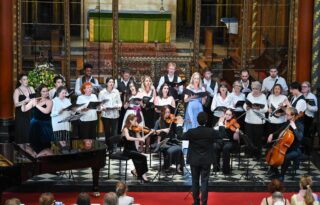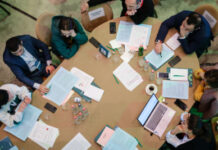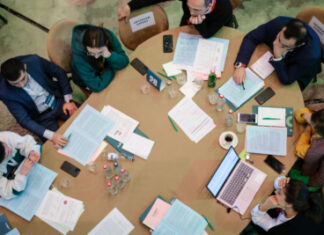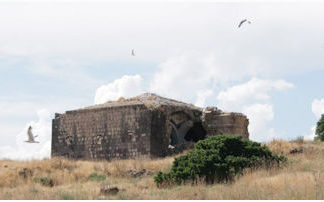By Hratch Tchilingirian
The debate on “Armenian identity” has a long history and is an ever-evolving discourse, especially in the Diaspora. At least in the last 100 years since 1915, along with efforts to build communities in dispersion, there have been hierarchies of identity and canonical approaches to definitions of “Armenian,” especially as articulated, rationalized and promoted by elites, institutions and political parties in the Diaspora and in Armenia. This essay is not a study of identity per se, but about one of the aspects of identity – the “Armenian” bit of it.
Definitions of ethnicity encompass “all ascriptively-based group boundaries, including based upon race, religion, language, and/or region.” Generally, scholars argue that “characteristics such as religion, language and region are viewed as ascriptive rather than cultural because they are typically defined for purposes of ethnicity,” which refer to ethnic lineage and ancestral customs rather than current practices or locality of a person or a group. Therefore, “while individuals may adopt new languages, lapse or change religions, or alter their places of residence, it is much more difficult for them to change their ethnicity, even when ethnicity is based upon such characteristics.”
Contemporary scholarship and theories of ethnicity have shown that “ethnic boundaries” — patterns of social interaction that reinforce self-identification of a group and outsiders’ confirmation of the group’s distinctions — are socially constructed. They are “not predetermined by biology or customs, but malleable and responsive to changes in the surrounding social environment.” As such, ethnic boundaries are social mediums through which members associate with the larger group. Culture and geography are the two most emphasized elements in most of the literature on ethnic identity research. The cultural element is generally “viewed as a social construction involving insiders and outsiders mutually acknowledging group differences in cultural beliefs and practices.” The other is employed to define the geographic origin of ethnic groups and, as such, “social origins that are foreign to the host society.” The geographic element has a largely objective basis, but is also partly subjective.
In the Armenian case particularly, on one hand, there are a host of assumptions on identity and “politically correct” definitions, expectations and interpretations of “who is an Armenian;” on the other, new self-defined and actualized “Armenian identities” are prevalent among post-genocide third and fourth generation Armenians spread around the world. These include, for example, not only hyphenated Armenians (American-Armenian, Lebanese-Armenian, Russian-Armenian, etc.), but also percentile-Armenians (half, quarter, 1/8 Armenian, etc.) and, recently, the more openly discussed category of “Islamized Armenian” identity.
In short, identity is not a fixed notion; it is an evolving concept depending on the social, political, and cultural environment, among other aspects, in which Armenians find themselves. For instance, the case of the Armenian communities in the Middle East provides a glimpse of the fact that identity construction, preservation and extension are not only a matter of internal group self-definition, externalization and internalization. In the Middle East, identity is also imposed from a variety of sources that include state and social structures, political processes and religious-cultural conditions. On one hand, identity markers for both the majority host society and the minority communities are state-defined, socially constructed and objectified. On the other, what might be termed the ‘soft othering’ of Christians and other non-Muslim groups by state and religious discourse reinforces the ‘differences’ and ‘incompatibilities’ of the ‘others’ in the mind of the larger society.








